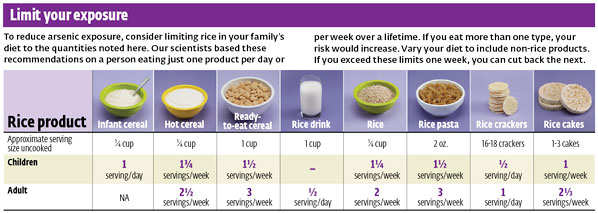FDA Supression Of Arsenic In Our Foods. What Causes Us To DO and THINK What We Do.
page: 1
7
While many are arguing over politics, presidential stupidity, and the state of our social affairs, we have glossed over some of the most important aspects of our lives and survival, and that is our most important component. What we drink and eat.
Our actions and reactions and thought processes all together have a huge part to do with what we consume. If we (and we are) consuming things that can and are altering our perceptions, then our points, aspirations, conversations, and actions are altered, because of what are brains and bodies are ingesting.
Arsenic
Arsenic is a chemical element with symbol As and atomic number 33.
Military
After World War I, the United States built up a stockpile of 20,000 tonnes of lewisite (ClCH=CHAsCl2), a chemical weapon that is a vesicant (blister agent) and lung irritant. The stockpile was neutralized with bleach and dumped into the Gulf of Mexico after the 1950s.[54] During the Vietnam War the United States used Agent Blue, a mixture of sodium cacodylate and its acid form, as one of the rainbow herbicides to deprive invading North Vietnamese soldiers of foliage cover and rice.
Heredity
Arsenic has been linked to epigenetic changes, heritable changes in gene expression that occur without changes in DNA sequence. These include DNA methylation, histone modification, and RNA interference. Toxic levels of arsenic cause significant DNA hypermethylation of tumor suppressor genes p16 and p53, thus increasing risk of carcinogenesis.
Legal limits, food, and drink
In the United States in 2012, testing by separate groups of researchers at the Children's Environmental Health and Disease Prevention Research Center at Dartmouth College (early in the year, focusing on urinary levels in children)[110] and Consumer Reports (in November)[111][112] found levels of arsenic in rice which resulted in calls for the FDA to set limits.[101] The FDA released some testing results in September 2012,[113][114] and as of July 2013 is still collecting data in support of a new potential regulation. It has not recommended any changes in consumer behavior.[115] Consumer Reports recommended that the EPA and FDA eliminate arsenic-containing fertilizer, drugs, and pesticides in food production; that the FDA establish a legal limit for food; that industry change production practices to lower arsenic levels, especially in food for children; and that consumers test home water supplies, eat a varied diet, and cook rice with excess water which is drained off (reducing inorganic arsenic by about one third along with a slight reduction in vitamin content).[112]
A 2014 World Health Organization advisory conference will consider limits of 200-300 ppb for rice.
en.wikipedia.org...

Organic rice baby cereal, rice breakfast cereals, brown rice, white rice—new tests by Consumer Reports have found that those and other types of rice products on grocery shelves contain arsenic, many at worrisome levels.
Arsenic not only is a potent human carcinogen but also can set up children for other health problems in later life.
Following our January investigation, "Arsenic in Your Juice," which found arsenic in apple and grape juices, we recently tested more than 200 samples of a host of rice products. They included iconic labels and store brands, organic products and conventional ones; some were aimed at the booming gluten-free market.
The results of our tests were even more troubling in some ways than our findings for juice. In virtually every product tested, we found measurable amounts of total arsenic in its two forms. We found significant levels of inorganic arsenic, which is a carcinogen, in almost every product category, along with organic arsenic, which is less toxic but still of concern. Moreover, the foods we checked are popular staples, eaten by adults and children alike. See the chart summarizing results of our tests for arsenic in rice or rice products.
Though rice isn’t the only dietary source of arsenic—some vegetables, fruits, and even water can harbor it—the Environmental Protection Agency assumes there is actually no “safe” level of exposure to inorganic arsenic.
No federal limit exists for arsenic in most foods, but the standard for drinking water is 10 parts per billion (ppb). Keep in mind: That level is twice the 5 ppb that the EPA originally proposed and that New Jersey actually established. Using the 5-ppb standard in our study, we found that a single serving of some rices could give an average adult almost one and a half times the inorganic arsenic he or she would get from a whole day’s consumption of water, about 1 liter.
We also discovered that some infant rice cereals, which are often a baby’s first solid food, had levels of inorganic arsenic at least five times more than has been found in alternatives such as oatmeal. Given our findings, we suggest limiting the consumption of rice products. Use our recommendations.
www.consumerreports.org...


Here are a few of the videos that at one point was seen as a hoax, and has now become true.
No comments:
Post a Comment